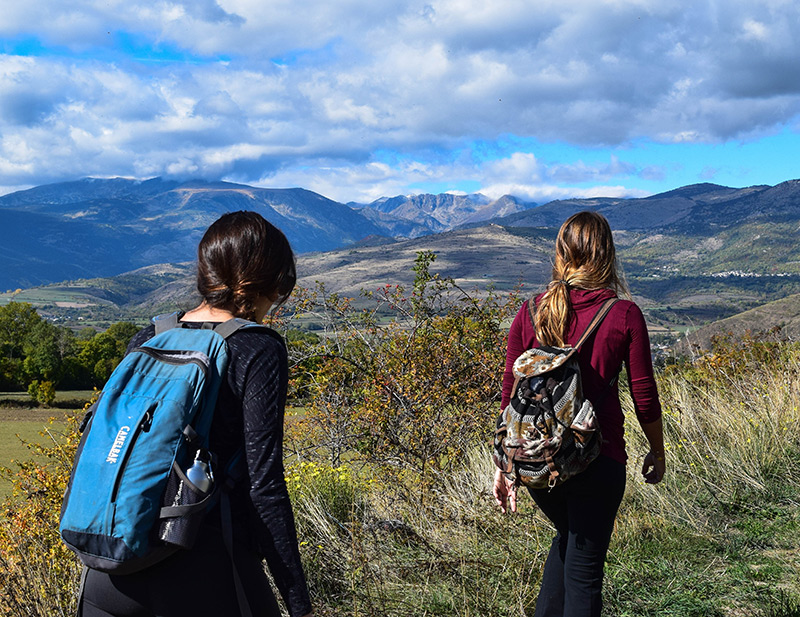- Home
- Find A Physician
- FIND A PHYSICIAN
- LymeTimes
- Current Issue
- Archives
- FEATURED LYMEDISEASE.ORG ISSUES
- Resources
- LYME LITERATE PHYSICIAN VIDEOS
- Physicians
- Members
- About Us
- Resources
A s government limits our movement due to the coronavirus outbreak, many of us are going to make our way outdoors to get some exercise, relieve stress and get a little alone time for ourselves.
More of us will be taking walks in the woods and fields. Many of us will be taking our dogs with us. We’ll be going out back and clearing fallen winter branches and brush. We’ll be going into the tall grass to clean up trash or fix damaged fences or just to wander around.
But just as we practice social distancing from one another, we need to remember to distance ourselves from another danger — the threat of Lyme disease, viral Powassan and other tick-borne illnesses.
Tick season never really ends.
But spring is when we venture out from our homes into theirs to cope with being homebound all winter.
It’s even more imperative that we take precautions against Lyme disease, as the state and national health systems are going to be so overwhelmed with coronavirus in the coming weeks
In 2018, state and local health departments reported nearly 48,000 cases of tick-borne diseases to the U.S. Centers for Disease Control and Prevention. Of those, about 33,600 were for Lyme disease.
Protect yourself as if every tick was carrying a disease
Experts say this year is no different than past years, in that the ticks will be waiting for us when we go outside.
And we need to take steps to protect ourselves.
It’s even more imperative that we take precautions this spring and summer, as the state and national health systems are going to be so overwhelmed with coronavirus in the coming weeks that we don’t want to inconvenience ourselves, and further burden our hospitals and medical centers, with our tick-related illnesses.

Self-protection is the only way to keep out of the doctor’s office.
“Pretty much everywhere in New York, it’s an issue,” said Dorothy Kupcha Leland, a nationally recognized Lyme disease activist, vice president of lymedisease.org, and parent of a child with Lyme disease.
Ticks, she said, are oblivious to coronavirus.
“You just want to make sure they don’t do it to you,” the California resident said in an interview on Friday.
While it’s difficult to predict where infestations of ticks will be most prevalent, Leland said that in general, tick habitats are spreading into areas where they haven’t been before.
And it’s difficult for the ordinary walker or hiker to know where they’re most likely to be infected with a tick-related illness.
She said one could find an area populated with ticks that are heavily infected with disease, while just a few hundred yards away, relatively few ticks could be carrying illnesses.
You just don’t know. So you need to protect yourself, your family members and your pets as if every tick was carrying a disease.
“There’s a lot that still isn’t known,” Leland said. “But in general to the person that’s just walking around, you need to protect yourself. You can’t look at [a tick] and see which one is safe.”
Steps to protect yourself from tick bites
Protection includes wearing protective clothing, including clothing treated with Permethrin (brand name Nix, Rid and Elimite); spraying insect repellent containing Deet on your skin; and checking yourself regularly for the presence of ticks after venturing outside. That includes checking your pets for ticks.
 Many people take their dogs for walks with them, and a tick doesn’t have to bite a dog to be dangerous to a person. Ticks can easily migrate from a dog’s fur to people. So when you’re checking your pet for ticks after a walk in the woods, make sure you’re still wearing your protective clothing and that you’re checking yourself regularly after checking your pet. Ticks can even move from people into homes, cars and clothing.
Many people take their dogs for walks with them, and a tick doesn’t have to bite a dog to be dangerous to a person. Ticks can easily migrate from a dog’s fur to people. So when you’re checking your pet for ticks after a walk in the woods, make sure you’re still wearing your protective clothing and that you’re checking yourself regularly after checking your pet. Ticks can even move from people into homes, cars and clothing.
Once you come inside, you can protect yourself by leaving backpacks and other clothing outside until you have time to check them. Putting clothing into a hot dryer for 10 minutes prior to washing it will help kill ticks and stop the spread inside your home, Leland said.
The Tick Act has yet to be funded
As for the national fight against Lyme disease and tick-borne illnesses, progress was made last year in Congress with the passage of the Kay Hagen Tick Act. The act is named after a North Carolina U.S. senator who died last October from Powassan virus, a rare tick-related debilitating disease.
But the Tick Act — which includes an allocation of $150 million over the next five years for education, awareness, detection and treatment of tick-borne illnesses — has yet to be funded, Leland said.
Lawmakers need to recognize that just because another disease has come to the forefront of our attention, it doesn’t mean they can neglect funding for other health issues like this that affect so many lives.
Yes, the coronavirus should be foremost on your mind these days.
But if you’re venturing outside to get away from it all, don’t forget about the hidden danger lurking in the woods and the grass, and take steps to protect yourself.
For more information on ticks, tick-related illnesses and how to protect yourself from harm, visit www.lymedisease.org.
This editorial was originally published by the Daily Gazette of Schenectady, New York.
Editor’s note: Any medical information included is based on a personal experience. For questions or concerns regarding health, please consult a doctor or medical professional.





























